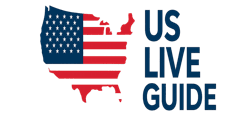Opening a bank account in the United States is an important step for residents, immigrants, students, and even non-residents doing business in America. A U.S. bank account makes it easier to receive payments, pay bills, save securely, and build credit history. This guide explains what is required to open a bank account in the USA in 2025, including documents, eligibility rules, and tips for choosing the right bank.
Types of Bank Accounts in the USA
Before opening an account, it’s important to understand the main types available:
-
Checking Account: For daily transactions (paychecks, bills, debit card).
-
Savings Account: For storing money and earning interest.
-
Business Account: For entrepreneurs and companies operating in the U.S.
-
Student Account: Special low-fee accounts for college/university students.
-
Non-Resident/International Accounts: Offered by some banks for foreigners.
Basic Requirements to Open a Bank Account
Most banks in the USA require the following:
1. Identification Documents
-
Valid passport
-
U.S. driver’s license or state ID (if applicable)
-
For immigrants: Green Card or immigration documents (visa, I-94, etc.)
2. Social Security Number (SSN) or Individual Taxpayer Identification Number (ITIN)
-
SSN is usually required.
-
If you do not have an SSN, some banks accept an ITIN (issued by the IRS for tax purposes).
3. Proof of Address
-
Utility bill (electricity, water, internet)
-
Lease agreement or rental contract
-
Official letter from university (for students)
4. Initial Deposit
-
Some banks require a minimum deposit, usually $25–$100.
-
Online banks may offer no minimum deposit accounts.
Step-by-Step Process
-
Choose a Bank or Credit Union – Compare fees, branch locations, online services.
-
Prepare Your Documents – ID, SSN/ITIN, proof of address.
-
Visit a Branch or Apply Online – Non-residents may need to apply in person.
-
Make the Initial Deposit – Cash, check, or transfer.
-
Activate Online Banking & Debit Card – Set up your account for daily use.
Special Cases
For Non-Residents
Some banks (like Bank of America, Chase, Wells Fargo) allow foreigners to open accounts with just a passport and ITIN.
For Students
International students can open a bank account using:
-
Passport
-
I-20 form (student visa documentation)
-
University acceptance/enrollment letter
For Businesses
Opening a business bank account requires:
-
Employer Identification Number (EIN)
-
Business formation documents (LLC, corporation papers)
-
Proof of address
Tips for Choosing the Right Bank
-
Big Banks (Chase, Bank of America, Wells Fargo, Citi): Wide ATM access, strong international services.
-
Credit Unions: Lower fees, community-based.
-
Online Banks (Ally, Chime, Discover): No fees, higher interest on savings.
-
Consider Fees: Check for monthly maintenance fees, overdraft charges, ATM fees.
Opening a bank account in the U.S. requires identification, proof of address, and usually an SSN or ITIN. Whether you are a resident, immigrant, student, or non-resident, there are options available to meet your needs. By choosing the right bank and preparing the correct documents, you can open your account quickly and start managing your finances effectively.
👉 For more financial guides, check our Finance Section.
